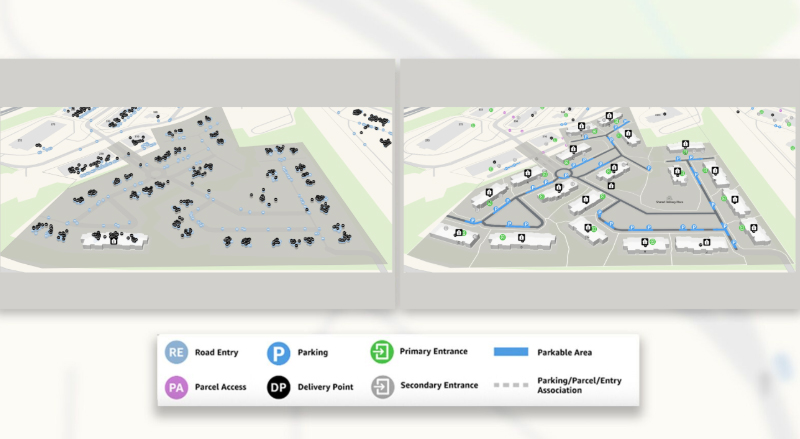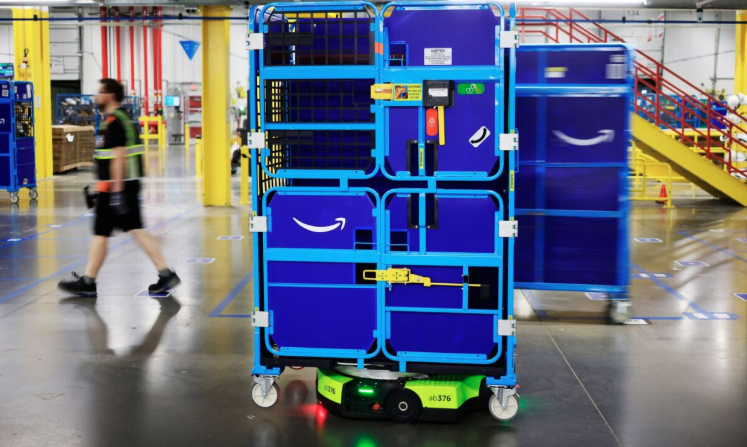Amazon has unveiled three AI-powered innovations designed to improve its delivery services: a next-generation mapping technology called Wellspring, an AI-driven demand forecasting model, and agentic AI capabilities for its robotic systems. These advancements underscore Amazon's ongoing investment in AI to address real-world challenges in supply chain and logistics. While operating behind the scenes, these technologies will directly benefit users through more accurate delivery locations, faster delivery times, and ensuring product availability when customers need them.
 |
AI technologies help drivers easily pinpoint delivery locations. Photo: *Amazon* |
Wellspring: A new AI-powered mapping system
Wellspring enhances delivery accuracy by leveraging generative AI to synthesize data from dozens of sources. These include satellite imagery, road networks, building diagrams, customer instructions, past delivery data, and street-level images. This data creates a comprehensive location system for millions of delivery points.
This technology is particularly useful in complex areas like multi-building apartment complexes or new residential areas not yet updated on standard map applications. Wellspring enables drivers to easily identify specific apartment units within buildings, convenient parking spots, and communal delivery areas, thus increasing delivery accuracy and speed.
During a US trial starting in 10/2024, the system mapped over 2.8 million apartment addresses across 14,000 complexes and identified optimal parking at 4 million addresses. Information such as building entrances and mailroom locations was determined by analyzing delivery confirmation photos and location data. These results would have previously taken years to achieve without Wellspring.
 |
The Wellspring map shows both delivery locations, based on delivery history and geographic coordinates (left) and AI-assisted technology pinpoints the entrance, parking, and individual units within an apartment complex and displays common delivery locations (right). |
AI-powered demand forecasting
Amazon is deploying a new AI-powered forecasting model to predict what customers will want to buy, where, and when, for hundreds of millions of products daily.
Unlike the older system, which relied primarily on past sales data, the new model incorporates real-time data like weather conditions and holiday schedules. This allows Amazon to position the right products in the right place at the right time. Examples include skis in Colorado during winter or sunscreen in Massachusetts during summer.
This model has improved nationwide forecast accuracy by 10% for discount events and increased regional accuracy by 20% for millions of popular products. This not only enhances operational efficiency but also helps reduce carbon emissions.
Amazon's fulfillment centers in the US, Canada, Mexico, and Brazil are currently using this technology, with plans to expand to other regions soon.
 |
Proteus, Amazon's autonomous mobile robot. Photo: *Amazon* |
Agentic AI: A new step in robot automation
A new research group on Agentic AI at Amazon Robotics is developing an advanced AI framework to enable robots in fulfillment centers to listen, comprehend natural language, reason, and act independently. Developing agentic AI capabilities promises several benefits: improved safety for front-line employees, faster delivery speeds, and increased operational efficiency as one robot can handle multiple roles.
These are just a few of the many initiatives Amazon is undertaking to apply AI across its operations, creating better experiences for customers, employees, and partners in the evolving age of AI.
Nhu Y (*According to Amazon*)












